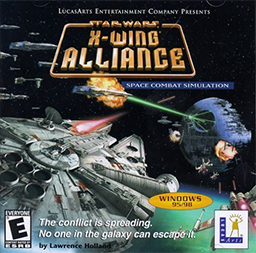
Star Wars: X-Wing Alliance is a space simulation video game, the sequel to both Star Wars: TIE Fighter and Star Wars: X-Wing vs. TIE Fighter. X-Wing Alliance presents the story of the Azzameen family, a family of space traders. The player assumes the role of Ace Azzameen, the youngest of the Azzameen children, juggling military duty as a fighter pilot for the Rebel Alliance, and allegiance to his family, flying larger heavily armed freighters for the family business, amid a bloody family feud and in the larger context of a galactic civil war. It received favorable reviews.
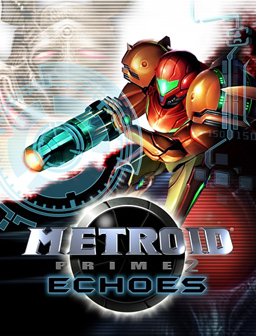
Metroid Prime 2: Echoes is a 2004 action-adventure game developed by Retro Studios and published by Nintendo for the GameCube. The sequel to Metroid Prime (2002) and the first Metroid game with a multiplayer feature, Echoes was released in North America, Europe and Australia in 2004 and in Japan under the name Metroid Prime 2: Dark Echoes in May 2005.

4X is a subgenre of strategy-based computer and board games, and includes both turn-based and real-time strategy titles. The gameplay generally involves building an empire. Emphasis is placed upon economic and technological development, as well as a range of military and non-military routes to supremacy.

Frank Klepacki is an American musician and video game composer, best known for his work on the Command & Conquer series. Having learned to play drums as a child, he joined Westwood Studios as a composer when he was 17 years old. He has scored several games there, including the Lands of Lore series, Westwood Studios' Dune games, The Legend of Kyrandia series, Blade Runner, and the Command & Conquer series. His work in Command & Conquer: Red Alert won two awards.
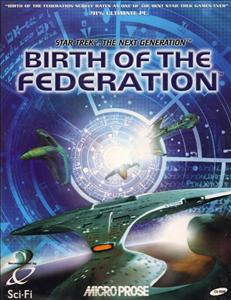
Star Trek: Birth of the Federation is a 4X turn-based strategy video game developed by MicroProse and published by Hasbro Interactive. The game was initially released in 1999 for Windows personal computers.

Star Wars: Galactic Battlegrounds is a real-time strategy video game set in the Star Wars universe. It was developed by LucasArts. It was released in November 2001. An expansion pack, Clone Campaigns, was released on May 14, 2002, adding two new factions and campaigns. Later that year, both Galactic Battlegrounds and Clone Campaigns were released in a box set, Star Wars: Galactic Battlegrounds Saga.

Star Wars: Force Commander is a real-time strategy video game released for the Microsoft Windows platform in 2000. It was co-developed by Ronin Entertainment and LucasArts, and published by LucasArts. Its plot interweaves between Star Wars: A New Hope and Return of the Jedi, taking place in key battles. Peter McConnell created remixed tracks of John Williams's original score with influences from hard rock and techno music.

Star Wars Rogue Squadron II: Rogue Leader is a flight action game co-developed by Factor 5 and LucasArts and is the second of the Rogue Squadron series. It was published by LucasArts and released as a launch title for the GameCube in North America on November 18, 2001, and Europe on May 3, 2002. Set in the fictional Star Wars galaxy, the game spans all three original trilogy Star Wars films. The player controls either Luke Skywalker or Wedge Antilles. As the game progresses, Skywalker, Antilles and the Rebel Alliance fight the Galactic Empire in ten missions across various planets.
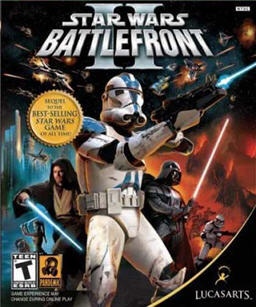
Star Wars: Battlefront II is a 2005 first and third-person shooter video game based on the Star Wars film franchise. Developed by Pandemic Studios and published by LucasArts, it is a sequel to 2004's Star Wars: Battlefront and the second installment in the Star Wars: Battlefront series. The game was released in PAL regions on October 28, 2005, on the PlayStation 2, PlayStation Portable (PSP), Microsoft Windows, and Xbox platforms, and in North America on November 1 of the same year. It was released on the PlayStation Store on October 20, 2009, for download on the PSP. The PSP version was developed by Savage Entertainment.
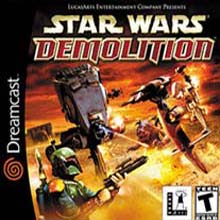
Star Wars: Demolition is a vehicular combat game set in the Star Wars universe created by Luxoflux and LucasArts using the Vigilante 8 game engine. The premise of the game is that the Galactic Empire have banned Jabba the Hutt's podraces, so Jabba creates a more life-threatening vehicular combat contest.

Star Wars Episode I: Jedi Power Battles is an action Star Wars video game set during the time frame of Star Wars: Episode I – The Phantom Menace. The game was first released for the PlayStation, and afterwards for the Dreamcast and the Game Boy Advance.
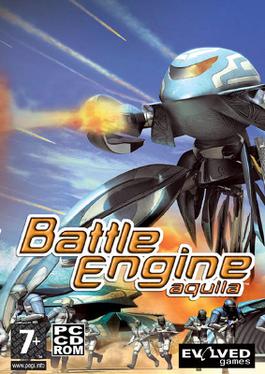
Battle Engine Aquila is a 2003 video game for PlayStation 2 and Xbox developed by Lost Toys and published by Infogrames Europe. In the game the player pilots the Battle Engine for the Forseti military in their wars against the Muspell to decide who will rule what's left of the world. Battle Engine Aquila received little attention from the public despite overall good reviews from critics. It was listed as #86 in the Top 100 Games for PlayStation 2 by IGN. A later Microsoft Windows port was published by Encore Software.

Star Trek Starfleet Command II: Empires at War is the sequel to Star Trek: Starfleet Command and the second in the series of real-time space combat games, developed by Taldren, Inc. and published by Interplay. A stand-alone expansion pack was released in June 2001 titled Starfleet Command: Orion Pirates.

Star Wars Rogue Squadron III: Rebel Strike is an action video game developed by Factor 5 and published by LucasArts for the GameCube. The game is set during the original Star Wars trilogy and recreates battles that take place during those films. The game follows Rogue Squadron, which, under the command of Luke Skywalker and Wedge Antilles, uses starfighters to engage and defeat the Galactic Empire.
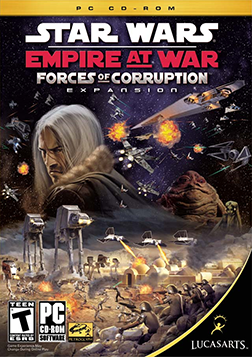
Star Wars: Empire at War: Forces of Corruption is an expansion pack for the computer game Star Wars: Empire at War released in October 2006. It adds the "Zann Consortium" as a third faction in addition to a number of new features.

Star Wars Battlefront: Renegade Squadron is a third-person shooter video game based on the Star Wars franchise. It is the third entry in the Star Wars: Battlefront series and the first handheld exclusive. It was released on October 9, 2007, in North America and later in Australia and Europe, as a PlayStation Portable (PSP) exclusive. Renegade Squadron was one of the first games available in a bundle pack with the newly released PSP redesign.

Star Trek: Conquest is a video game set in the Star Trek universe. The game features both turn-based strategy and real time strategy gameplay. It was developed by Scottish studio 4J Studios, which previously developed Star Trek: Encounters, and was published by Bethesda Softworks for the PlayStation 2 and Wii, becoming the third game available on a Nintendo console to be published by Bethesda and first since the NES version of Home Alone in 1991.

Star Wars: TIE Fighter is a 1994 Star Wars space flight simulator and space combat video game, a sequel in the Star Wars: X-Wing series. It places the player in the role of an Imperial starfighter pilot during events that occur between The Empire Strikes Back and Return of the Jedi.

Star Wars: Battlefront is a 2004 first and third-person shooter video game based on the Star Wars film franchise. Developed by Pandemic Studios and published by LucasArts, it is the first installment in the Star Wars: Battlefront series. It was released on September 21, 2004, for PlayStation 2, Xbox and Microsoft Windows to coincide the release of the Star Wars Trilogy DVD set. Aspyr released a Mac OS X port in July 2005, and a cellular phone version, Star Wars Battlefront Mobile, was released on November 1, 2005.

Star Wars Battlefront: Elite Squadron is a third-person shooter video game based on the Star Wars franchise. It the fourth installment in the Star Wars: Battlefront series, and the second handheld exclusive, after Star Wars Battlefront: Renegade Squadron. It was released on November 3, 2009, in North America and November 6 in Europe, for the Nintendo DS and PlayStation Portable.





















